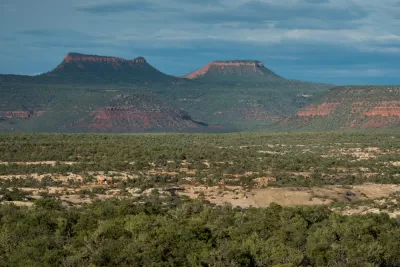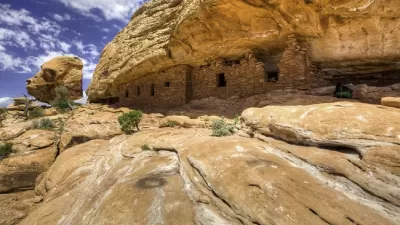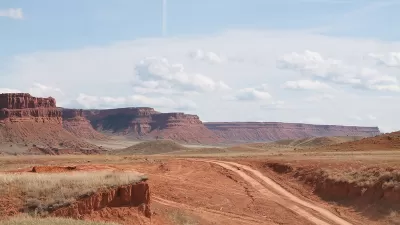Interior Secretary Ryan Zinke, in an early decision to come of a nationwide review of national monument designations, recommends that President Trump reduce the size of Bears Ears National Monument.

Jim Carlton reports: "Interior Secretary Ryan Zinke is recommending shrinking the size of Utah’s Bears Ears National Monument, in a move that could foreshadow the fate of other protected space under review by the new administration."
Secretary Zinke's recommendations will be sure to add fuel to the fire of "a long-running national debate over the appropriate use of vast public lands," according to Carlton. "Ranchers, miners and loggers have argued that land should be more open to industry and put under local control to help stimulate the economy. Others argue the land should be preserved for wildlife and as open space for future generations." Former President Obama designated Bears Ears a National Monument at the end of his second term, in December 2016. President Trump ordered a review of 26 national monuments, including Bears Ears, early in his new term
"The interior secretary said at a press conference Monday announcing his decision that he believes the monument should only include areas around objects of the most archaeological importance such as ancient cliff dwellings and rock drawings," according to Carlton. "Mr. Zinke is asking that the president handle the actual reduction, and called for a bill that would give the Navajo, the Ute and a coalition of other tribes that have ancestral and cultural ties to the Bears Ears land the same co-management role they had under the existing monument."
[The Wall Street Journal article might be behind a paywall for some readers.]
FULL STORY: Interior Secretary Recommends Shrinking Utah Monument

Study: Maui’s Plan to Convert Vacation Rentals to Long-Term Housing Could Cause Nearly $1 Billion Economic Loss
The plan would reduce visitor accommodation by 25,% resulting in 1,900 jobs lost.

North Texas Transit Leaders Tout Benefits of TOD for Growing Region
At a summit focused on transit-oriented development, policymakers discussed how North Texas’ expanded light rail system can serve as a tool for economic growth.

Why Should We Subsidize Public Transportation?
Many public transit agencies face financial stress due to rising costs, declining fare revenue, and declining subsidies. Transit advocates must provide a strong business case for increasing public transit funding.

How Community Science Connects People, Parks, and Biodiversity
Community science engages people of all backgrounds in documenting local biodiversity, strengthening connections to nature, and contributing to global efforts like the City Nature Challenge to build a more inclusive and resilient future.

Alabama: Trump Terminates Settlements for Black Communities Harmed By Raw Sewage
Trump deemed the landmark civil rights agreement “illegal DEI and environmental justice policy.”

Dear Tesla Driver: “It’s not You, It’s Him.”
Amidst a booming bumper sticker industry, one writer offers solace to those asking, “Does this car make me look fascist?”
Urban Design for Planners 1: Software Tools
This six-course series explores essential urban design concepts using open source software and equips planners with the tools they need to participate fully in the urban design process.
Planning for Universal Design
Learn the tools for implementing Universal Design in planning regulations.
City of Santa Clarita
Ascent Environmental
Institute for Housing and Urban Development Studies (IHS)
City of Grandview
Harvard GSD Executive Education
Toledo-Lucas County Plan Commissions
Salt Lake City
NYU Wagner Graduate School of Public Service





























